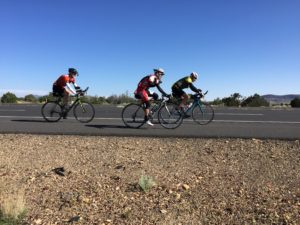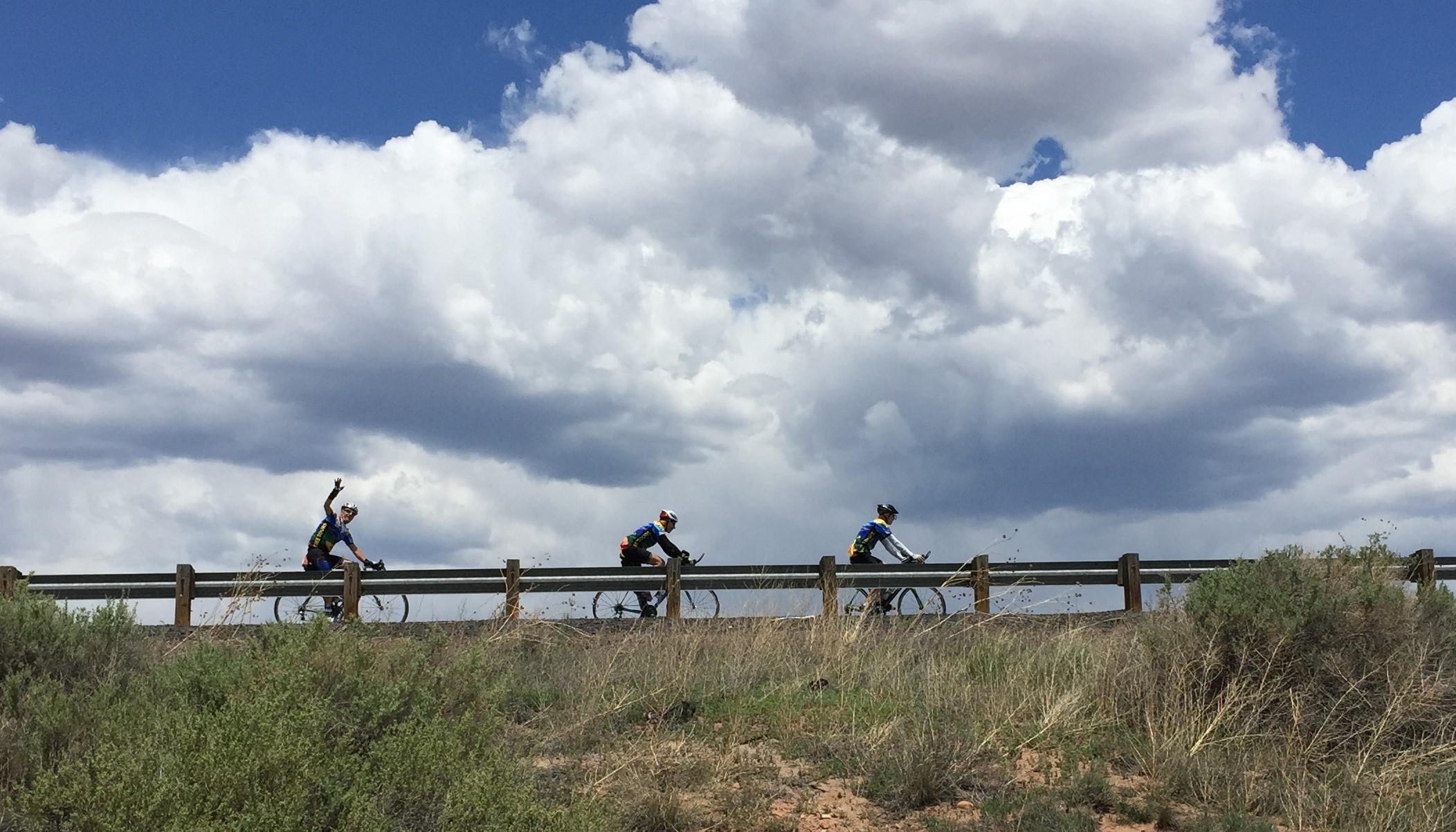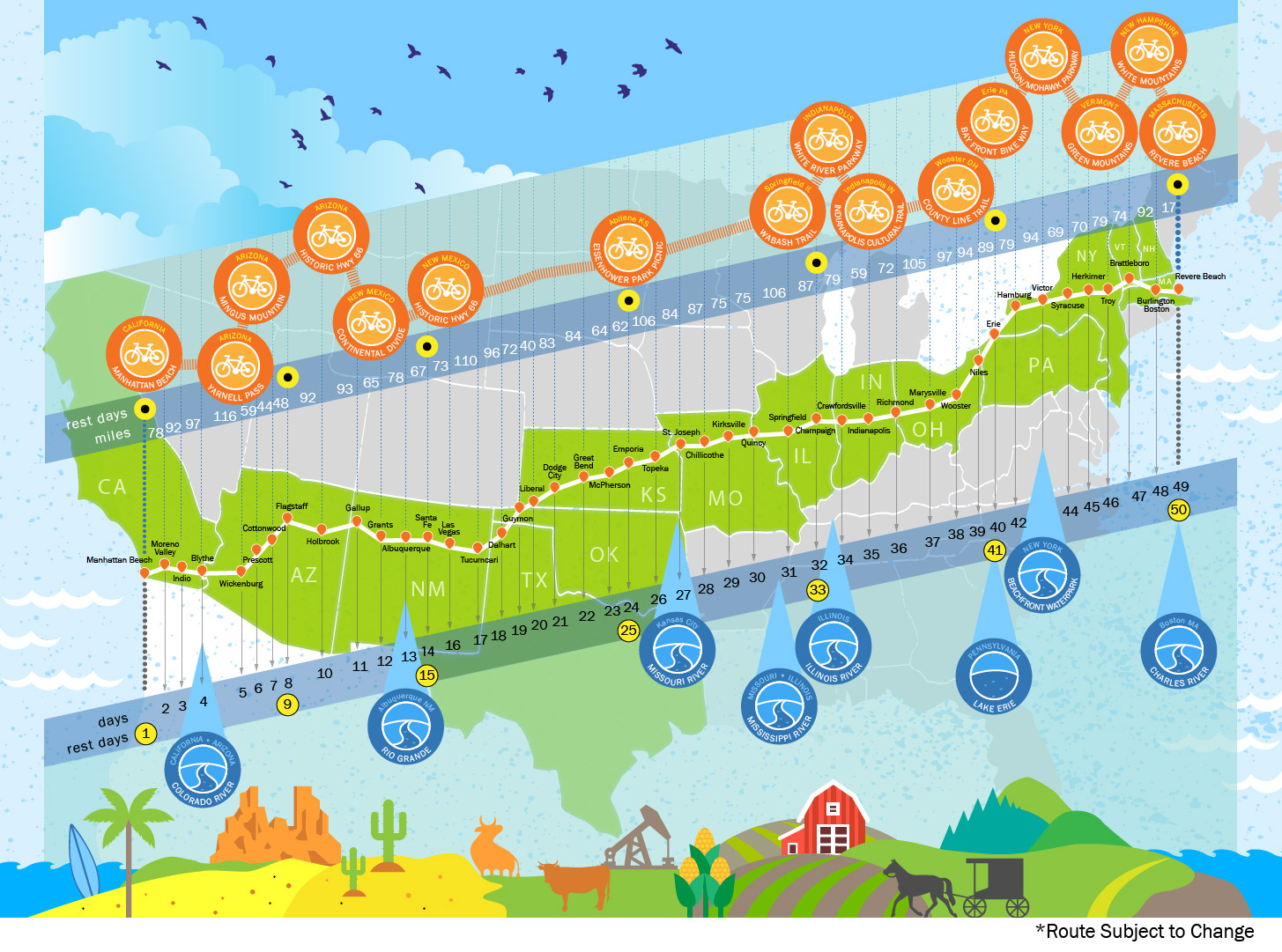How to Develop Your Training Schedule
How to Develop Your Training Schedule

Training pays of on the road…
Training for an event, be it a one day event, or riding your bike cross country, takes thought and planning. At least it should, to achieve the results that will make your experience an enjoyable one. There are as many strategies, training plans, and training schedules as there are riders, but training is like most things….you get out of it what you put into it. John Hughes and Dan Kehlenbach wrote a book on training that makes a lot of sense. Read and learn. Have fun!
This is an excerpt from Distance Cycling by John Hughes and Dan Kehlenbach, found on humankinetics.com.
Effective training for a distance cycling event follows a systematic plan. We present two examples: an 8-week program and a 15-week program. Use one of the sample programs to develop your personal plan, taking into account your fitness level, calendar, and target event.
Both programs use five distinct workouts. The first four of these train the aerobic, lactic acid, and ATP-CP energy systems, and the fifth targets core strength, flexibility, and muscular strength.
For each type of workout we provide shorter and longer options following the principle of individuality. Choose the option that fits your fitness level and available time. We define workouts in terms of training time as opposed to distance. A 40-mile (65 km) ride in the hills is different from one in flat terrain, and a flat ride on a windy day is a different workout than a ride on a calm day. So, train by time.
Here are the workouts:
- Long. An endurance ride of 2:00 to 2:30 (8-week program) or 1:30 to 2:30 (15-week program) in the first week increasing to 5:15 to 6:30 in both programs. By doing these rides at your anticipated pace for the century, you train your aerobic metabolism, build endurance, and gain experience with pacing, nutrition, and other skills.
- Tempo. A midweek tempo ride beginning at 40 to 60 minutes and building to 60 to 90 minutes in both programs. By riding once a week a little faster than your century pace, you improve the upper range of your aerobic system and increase the cruising pace that you can hold in the century.
- Brisk. In both programs a brisk midweek ride of 30 to 40 minutes that includes 10 to 15 minutes of mixed intensity, increasing to 60 to 90 minutes including 20 to 30 minutes of mixed intensity. The mixed intensity is a combination of hard riding and recovery. The hard efforts work the lactic acid and ATP-CP energy systems and improve your power to climb hills and ride with a faster group.
- Recovery. One or two active recovery rides of 20 to 30 minutes each using the low end of your aerobic metabolism, increasing to 40 to 60 minutes in both programs. You could run errands on your bike.
- Supplementary. Core strength, flexibility, and resistance maintenance training. Depending on your choices these would total 50 minutes to 2:40 each week in both programs.
Whether you follow the 8- or 15-week program, choose either the shorter or longer endurance ride, depending on your current fitness and schedule, and stay with that one through the program. The long ride should not be too much of your weekly volume. Therefore, if you plan the longer endurance ride then you should also do the longer tempo, brisk, and recovery rides. If you plan the shorter endurance ride you may include longer tempo, brisk, and recovery rides in your training if you have time. You’ll improve your fitness faster but don’t overdo it. Because the brisk ride is harder than the tempo ride, try to have two easy days (off or active recovery) before the brisk ride, although doing so may not be possible every week.
Both programs will help prepare you for your event. The 15-week program starts with 3:00 to 5:10 of riding the first week, slightly less than the 8-week program, and builds more slowly. Both programs ramp up to the same peak week of 7:55 to 11:00 of riding before the century.
Midway through both programs we include an easier week with less riding. This recovery week allows you to recover physically and mentally from the weeks of hard work before you ramp up to the peak week. Adaptations from training occur while your body is resting: “Stress plus rest equals success.” You may feel great approaching the recovery week and be tempted to skip it, but don’t. Your body will thank you later.
To help you recover fully for your event, both programs include a taper during the final week of training and the week before the event. During the taper you ride enough to maintain your fitness while significantly reducing the volume so that you are fresh. Right before your big event you can’t get stronger, but you can run yourself down. Don’t try to make up for lost training.
Read more about Distance Cycling by John Hughes and Dan Kehlenbach.



